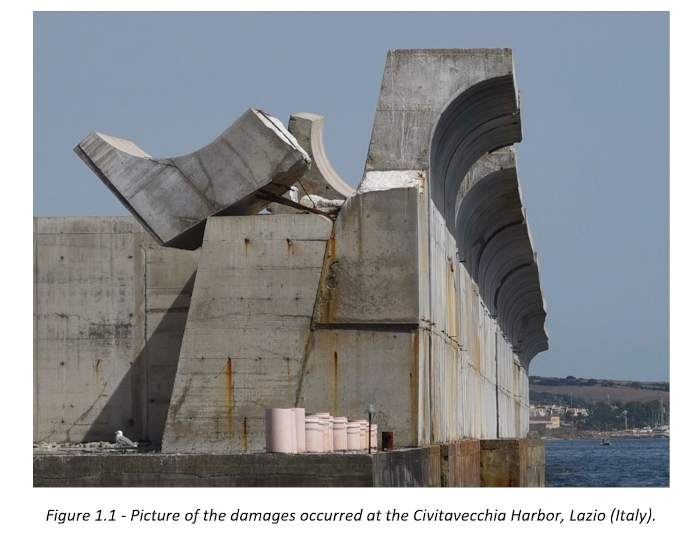
Titolo: Guidelines for the design of harbor breakwaters with novel recurved parapets
Acronimo: GuideBoaRd
Principal Investigator: Paolo De Girolamo
Unità di ricerca coinvolte: Sapienza Università di Roma (coordinatore), Università degli Studi di L’Aquila, Università di Padova
Descrizione:
This research project aims at developing new design guidelines for vertical breakwater equipped with overhanging parapet walls. Typical parapets with overhangs are recurved parapets, rectilinear parapets, or recurved crownwalls. In general, the strength of overhanging structures is to drastically decrease wave overtopping phenomena, reducing as a consequence the freeboard of the structure as well as its visual impact. At the same time, the presence of the overhang induces an uplift force. Furthermore, if the vertical breakwater is placed in large water depth, incident non-breaking waves give rise to a particular physical phenomenon named “Confined-Crest Impact (C-CI)” (Castellino et al., 2018; Martinelli et al., 2018), causing large impulsive loads on the structure. In this particular case, there is a lack of knowledge concerning the estimation of impact loads (e.g. Goda’s theory relates impulsive loads only to breaking wave conditions). With the aim of developing new design guidelines, further investigation of this impulsive phenomenon will be carried out by varying the shape of the parapets together with the geometrical and boundary conditions. An experimental campaign will be developed, concerning both numerical and laboratory tests. Different scenarios will be investigated. Laboratory test results are intended to be used as benchmark data for the validation and calibration of the numerical tests. The laboratory campaign will be focused on large- and medium-scale models. Subsequently, the numerical simulations will be used to calculate the characteristics parameter typically used for the design of vertical breakwater (e.g. pressure field and wave overtopping).
The final goal of the research project is to deal with: i) the prediction of wave overtopping intended as a correction factor taking into account the influence of the berm at the toe of the structure, ii) the study of the influence of the berm on the Confined-Crest Impact and iii) to evaluate the role of the parapet shape on the wave overtopping as well as on the Confined-Crest Impact. A toolkit will be developed and shared among the scientific and technical community.






